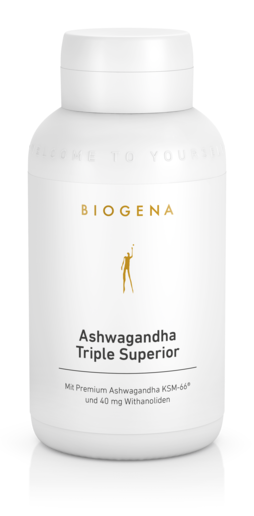Ashwagandha capsules & powder
Discover Ashwagandha - the Ayurvedic plant that has been valued for centuries as a natural sleep aid and stress support. Our high-quality capsules and powder combine traditional knowledge with premium quality.


Buy ashwagandha supplements online at BIOGENA
Ashwagandha (Withania somnifera): The plant, which has a tradition of over 1000 years in India, can now be purchased worldwide in the form of capsules, tablets or powders. This makes it possible for each of us to buy a piece of Ayurvedic wisdom. However, it is particularly wise to choose an exquisite Ashwagandha product from BIOGENA. As an Austrian premium manufacturer, BIOGENA always pursues the path of radical quality in its products.
Ashwagandha as a dietary supplement: Capsules, tablets, powder or drops
Ashwagandha in the form of supplements is available on the market in a variety of forms. However, the natural product is most commonly found in the form of capsules, tablets, powders or drops.
Which dosage form is best?
The great advantage of capsules is that they can be precisely dosed, have a long shelf life, are neutral in taste and are easy to transport. Although tablets also have these advantages, when it comes to additives, capsules are the clear winners. After all, unnecessary additives can usually be avoided when manufacturing capsules – especially in semi-automatic production.
Less commonly found on the market are ashwagandha supplements in powder or drop form. These variants are particularly suitable for people who have difficulty swallowing. However, anyone who prefers an ashwagandha product in powder or drop form should definitely take a critical look at the list of ingredients. After all, there are more and less recommendable products among them. In addition, when it comes to powder preparations, portion-packed products should be chosen for reasons of dosage, hygiene and transportability.
Possible uses of ashwagandha preparations in comparison









